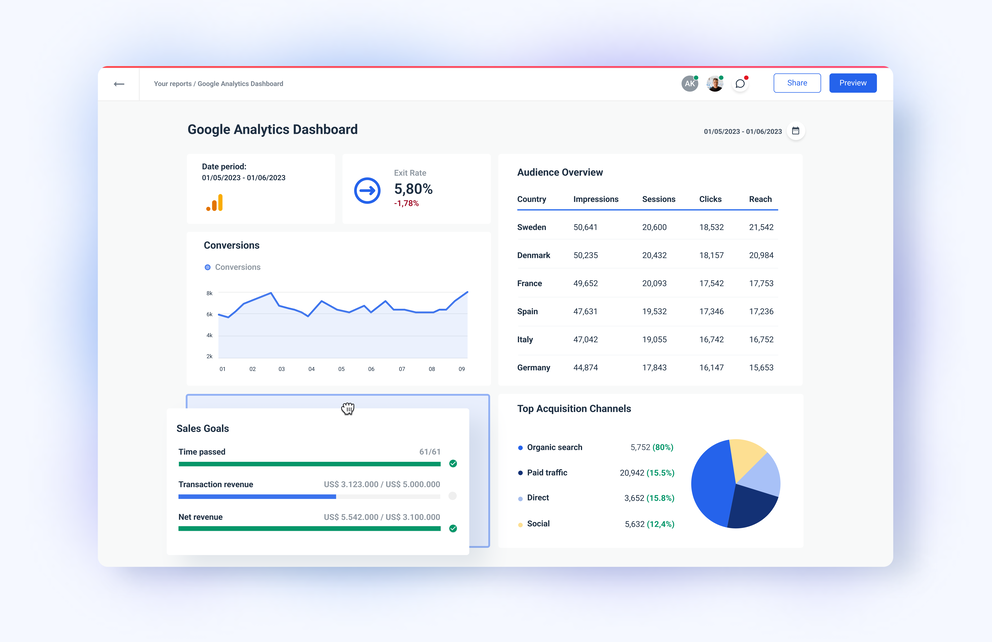Maximize Your Website Performance With Google Analytics Monitoring Code
In the digital landscape, comprehending individual communications with your web site is crucial for optimization. This strategic execution not just notifies your decisions but likewise paves the way for a much more appealing user experience.
Comprehending Google Analytics
Comprehending Google Analytics is important for web site proprietors and marketing experts intending to optimize their on-line visibility. This effective device gives critical insights right into user behavior, allowing stakeholders to make data-driven choices. By tracking various metrics, such as page sights, bounce rates, and individual demographics, Google Analytics aids determine which facets of a site are doing well and which need renovation.
One of the essential attributes of Google Analytics is its ability to section data. Customers can assess traffic sources, customer interaction, and conversion rates throughout different sectors, such as geographical places or device kinds. This granularity enables marketing experts to tailor their methods to particular audiences, therefore enhancing the effectiveness of their projects.

Setting Up Monitoring Code
To harness the full capacity of Google Analytics, establishing the monitoring code correctly is a fundamental action. The monitoring code, a snippet of JavaScript, enables Google Analytics to collect information about user communications on your site. To begin, log in to your Google Analytics account and navigate to the Admin area. Under the Residential or commercial property column, select "Monitoring Info" and afterwards "Tracking Code." Below, you will certainly locate your distinct monitoring ID, which starts with "UA-" complied with by a series of numbers.
Next, you'll need to install this code into the HTML of your site. Ideally, put the monitoring code simply before the closing tag on every page you want to keep track of. If you're utilizing a material administration system (CMS) like WordPress, take into consideration making use of plugins that facilitate very easy integration.
After implementing the code, it's critical to validate its capability. Use the "Real-Time" reports in Google Analytics to validate that data is being gathered as expected. By making certain proper arrangement, you produce a solid foundation for efficient data analysis and critical decision-making to boost your web site's performance.
Trick Metrics to Display
Consistently keeping an eye on key metrics in Google Analytics is important for evaluating your website's performance and customer interaction. Among the basic metrics to track are page sights, which provide insight right into just how frequently customers visit various pages on your site. In addition, unique visitors assist you recognize the reach of your material by showing the number of unique users are engaging with your website over a provided duration.
Bounce rate is an additional essential statistics, disclosing the portion of visitors that leave your website after seeing just one page. A high bounce rate might signal issues with material importance or user experience. Conversely, session duration shows for how long visitors remain on your website, helping you determine material effectiveness and individual interest.
Conversion rates are important for determining the success of your internet site in achieving specific objectives, such as kind entries or item acquisitions (when does the google analytics tracking code send an event hit to analytics?). Monitoring website traffic resources is also essential, as it helps identify which channels drive one of the most traffic and conversions, enabling even more targeted advertising approaches
Analyzing Site Visitor Habits

In addition, tracking customer paths via the website aids expose common navigation patterns. This details is vital in figuring out whether customers can easily discover the content they look for or if they run into obstacles that result in aggravation. Determining high exit pages can highlight locations that may require redesign or more interesting web content to preserve visitors.
Additionally, segmenting customers based on demographics, rate of interests, and behavior provides a deeper understanding of the target market. This division makes it possible for businesses to customize web content and advertising and marketing approaches better, increasing the probability of conversions. Eventually, examining site visitor habits not only informs site enhancements yet also fosters a more user-centric approach, resulting in improved contentment and loyalty over time.
Implementing Data-Driven Changes
Carrying out data-driven changes is vital for boosting internet site performance and accomplishing service objectives. By leveraging insights collected from Google Analytics, businesses can identify locations for improvement and make educated decisions to optimize customer experience.
First, evaluate vital efficiency indications (KPIs) such as bounce prices, session duration, and conversion prices my review here to pinpoint particular issues affecting user engagement - when does the google analytics tracking code send an event hit to analytics?. As an example, a high bounce rate on a touchdown page might indicate that the content is not resonating with visitors or that the page takes also long to lots

Conclusion
In conclusion, the application of Google Analytics tracking code is necessary for enhancing website efficiency. By accurately checking customer behavior and key metrics, valuable insights can be obtained, promoting data-driven decision-making - when does the google analytics tracking code send an event hit to analytics?. This procedure not just enhances individual experience however likewise lines up Website with more comprehensive business purposes. Constant evaluation and subsequent modifications based upon gathered data will cause continual enhancements, inevitably adding to the overall performance and success of the website.
By tracking various metrics, such as page views, bounce rates, and customer demographics, Google Analytics helps identify which aspects of a web site are carrying out well and which require improvement.
Individuals can assess traffic resources, customer interaction, and conversion prices across different sections, such as geographic areas or tool types. The monitoring code, a snippet of JavaScript, allows Google Analytics to accumulate information about customer interactions on your internet site.Regularly keeping track of Go Here vital metrics in Google Analytics is crucial for analyzing your web site's efficiency and customer interaction. By leveraging Google Analytics, website owners can gain useful understandings into exactly how customers connect with their website.